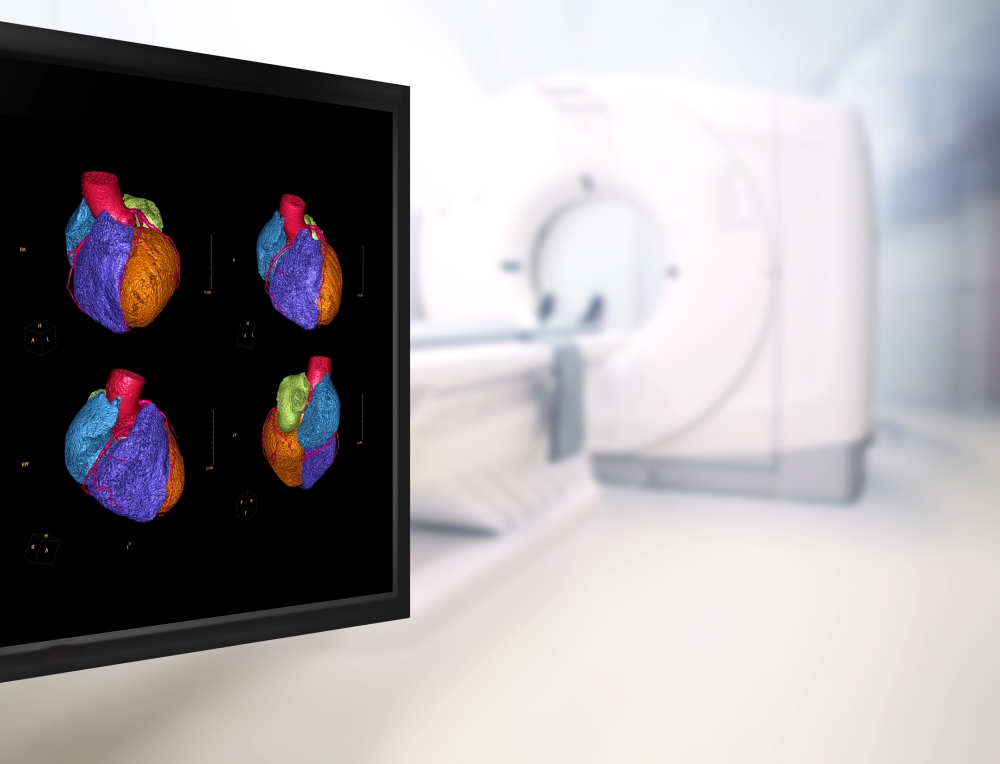Computed Tomographic Angiography
(CTA)
Overview
Computed (or computerized) tomographic angiography (CTA), or CT angiography, uses X-rays and computers to create detailed images of the blood vessels and the blood flow within them. A CTA can be performed to evaluate many of the body’s arterial systems, such as the heart, the brain, or the blood vessels coursing through the chest, abdomen, and pelvis.

What you can expect
Before having a CTA, you’ll be asked not to eat or drink anything for about four hours. You should ask your doctor or nurse practitioner about continuing to take your medications before the test. If you’re not already on medications to slow down your heart rate, your doctor may opt to administer beta blockers, a type of medication, to slow your heart rate to get a better image during the test.
The process for a CTA is as follows:
- Immediately before the test is performed, you’ll change into a hospital gown and remove all jewelry and other metal objects from your body, as these can interfere with the X-rays. Plan on the procedure taking 20 minutes to one hour to complete.
- You’ll need to lie very still for the best quality images. The radiology technician may ask you to hold your breath for 10 to 25 seconds at a time because any movement, even breathing, can blur the images.
- During the test, a contrast dye is injected into a vein in your hand or arm. As the dye flows through your bloodstream, radiation is then beamed at the area of the body that is being tested, and X-ray images are taken of the artery system under evaluation, which highlights the blood vessels and any blockages. A computer converts the X-ray images into 3D images.
- Once the CTA is complete, you can go back to your regular routine immediately. Doctors advise drinking water and other fluids to speed the elimination of the dye from your body.